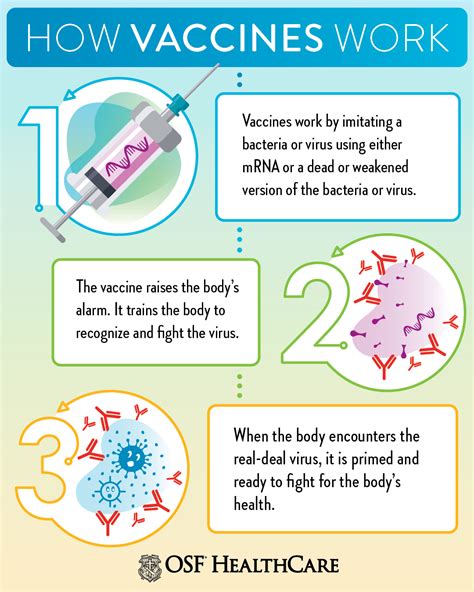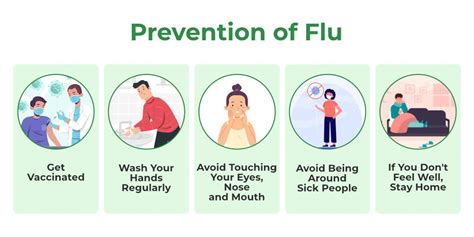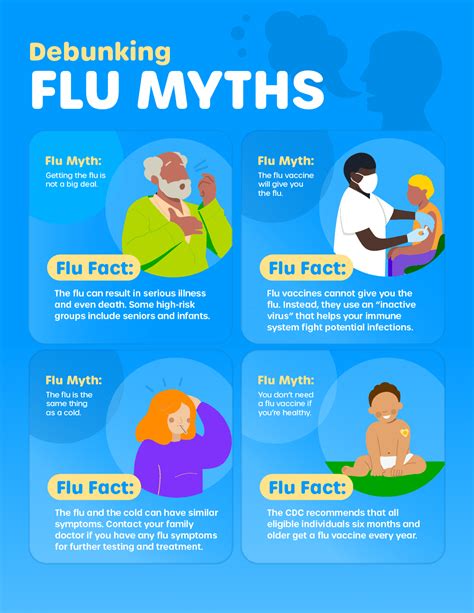Intro
Boost immunity with 5 ways to fight flu, including natural remedies, vaccination, and healthy habits, to prevent influenza and seasonal sickness, and stay protected with flu prevention tips and strategies.
The flu season is upon us, and it's essential to take proactive measures to protect ourselves and our loved ones from this highly contagious and potentially life-threatening illness. With the constant evolution of flu viruses, it's crucial to stay informed about the best ways to prevent and treat the flu. In this article, we will delve into the world of flu prevention and explore the most effective methods to keep you and your family safe. Whether you're a parent, a student, or a working professional, understanding how to fight the flu is vital for maintaining your overall health and well-being.
The importance of flu prevention cannot be overstated, as it not only helps to reduce the risk of complications but also prevents the spread of the virus to vulnerable populations such as the elderly, young children, and people with compromised immune systems. By taking a few simple steps, you can significantly reduce your chances of getting the flu and minimize its impact on your daily life. From vaccination and hygiene practices to nutrition and stress management, we will cover the top strategies for fighting the flu and staying healthy throughout the year.
As we navigate the complexities of flu prevention, it's essential to separate fact from fiction and focus on evidence-based methods that have been proven to be effective. With so much misinformation circulating online, it's crucial to consult reputable sources and trust the advice of healthcare professionals. By doing so, you can make informed decisions about your health and take control of your well-being. So, let's dive into the world of flu prevention and explore the top ways to keep you and your loved ones safe from the flu.
Understanding the Flu Virus

How the Flu Virus Spreads
The flu virus can spread quickly and easily, especially in crowded areas such as schools, offices, and public transportation. When an infected person coughs or sneezes, they release droplets that contain the virus into the air, which can then be inhaled by others. The virus can also survive on surfaces for up to 24 hours, making it possible to contract the flu by touching a contaminated object and then touching your mouth, nose, or eyes.Vaccination as a Prevention Method

Benefits of Vaccination
Vaccination offers several benefits, including: * Reduced risk of contracting the flu * Reduced risk of complications, such as pneumonia and bronchitis * Reduced risk of hospitalization and death * Protection against multiple strains of the flu virus * Reduced risk of spreading the flu to othersHygiene Practices to Prevent the Flu

Importance of Hand Hygiene
Hand hygiene is one of the most critical aspects of preventing the spread of the flu. When you wash your hands with soap and water, you can reduce the number of flu viruses on your hands by up to 99%. This can help prevent you from contracting the flu and reduce the risk of spreading it to others. It's essential to wash your hands frequently, especially after using the bathroom, before eating, and after blowing your nose, coughing or sneezing.Nutrition and the Flu

Key Nutrients for Immune Function
Some key nutrients that can help to support immune function and prevent the flu include: * Vitamin C: found in citrus fruits, leafy greens, and bell peppers * Vitamin D: found in fatty fish, egg yolks, and fortified dairy products * Zinc: found in oysters, beef, and chicken * Probiotics: found in yogurt, kefir, and fermented vegetablesStress Management and the Flu

Techniques for Managing Stress
Some techniques for managing stress include: * Meditation and mindfulness practices * Yoga and tai chi * Deep breathing exercises * Progressive muscle relaxation * Journaling and expressive writingConclusion and Final Thoughts

We invite you to share your thoughts and experiences with flu prevention in the comments section below. Have you or a loved one ever contracted the flu? What measures do you take to prevent the flu? Share your story and help others stay healthy and informed.
What is the best way to prevent the flu?
+The best way to prevent the flu is to get vaccinated every year, practice good hygiene, and maintain a healthy lifestyle, including a balanced diet, regular exercise, and stress management.
How long does the flu vaccine last?
+The flu vaccine typically lasts for one flu season, which is usually from October to May. It's essential to get vaccinated every year, as the flu virus is constantly evolving, and last year's vaccine may not provide protection against this year's strains.
Can you get the flu from the flu vaccine?
+No, you cannot get the flu from the flu vaccine. The flu vaccine is made from inactivated or weakened flu viruses, which cannot cause the flu. However, some people may experience mild side effects, such as soreness, redness, or swelling at the injection site, or mild flu-like symptoms, such as fever, headache, or fatigue.
